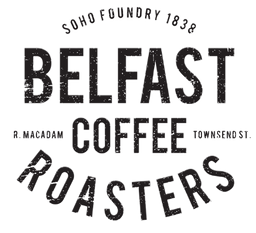The Eastern Highlands is a mountainous province encompassing the Kratke and Bismarck ranges interspersed with broad valleys including where this coffee is grown, the Okapa valley. It is the leading producer of coffee in the country, and the Highland Organic Agriculture Cooperative (HOAC) is one of the oldest Faritrade Certified organizations in Oceania. They were originally registered in 2003, certified in 2005 and now comprise of around 3000 small holder producers spread across 32 village communities spread over 500 km2. The premium earned has been spent on providing fresh water for 11 of these communities, as well as helping with infrastructure such as roads which makes a huge difference given the isolation of the villages.
Coffee is grown mainly by smallholders in ‘gardens’ – a small plot of land that contains everything from a few trees up to a three-hectare plot at most. Trees here can be 25 years or older, and in general trees in the country are a lot older than you typically find in other countries. This often leads to lower yields and so less productivity on the farms. Once picked coffee is pulped, it is then dry fermented for 24 hours in wooden or plastic boxes before being washed and dried on sails – stretched tarpaulin drying beds – or raised beds. This is covered at night to protect from any effects of dew. Coffee is then collected and taken to a centralized dry mill in Goroka for sorting, cleaning and exporting the coffee.
Most varietals were introduced to the country in the 1950’s from African and Australian research stations, though coffee is first recorded in PNG in 1873, and was growing in the Rabaul Botanical Gardens by 1890, but was not grown in Simbu until the 1960’s. More confusingly, French Missionaries planted coffee in the Kilimanjaro area in the 1890’s and you sometimes see that given as the
source for Arusha. This has assumed to be from a Bourbon heritage, though other countries have had coffee tested from this lineage and had that proven to be of Typica lineage.
This coffee has tasting notes of dried fruits, vanilla and smoky with natural brightness.
This coffee shares the low-toned richness of coffees from neighboring Indonesia, but is particularly sturdy, dense, and crisply robust. This is a coffee that should maintain authority in the face of enthusiastic additions of whitener and sweetener.










